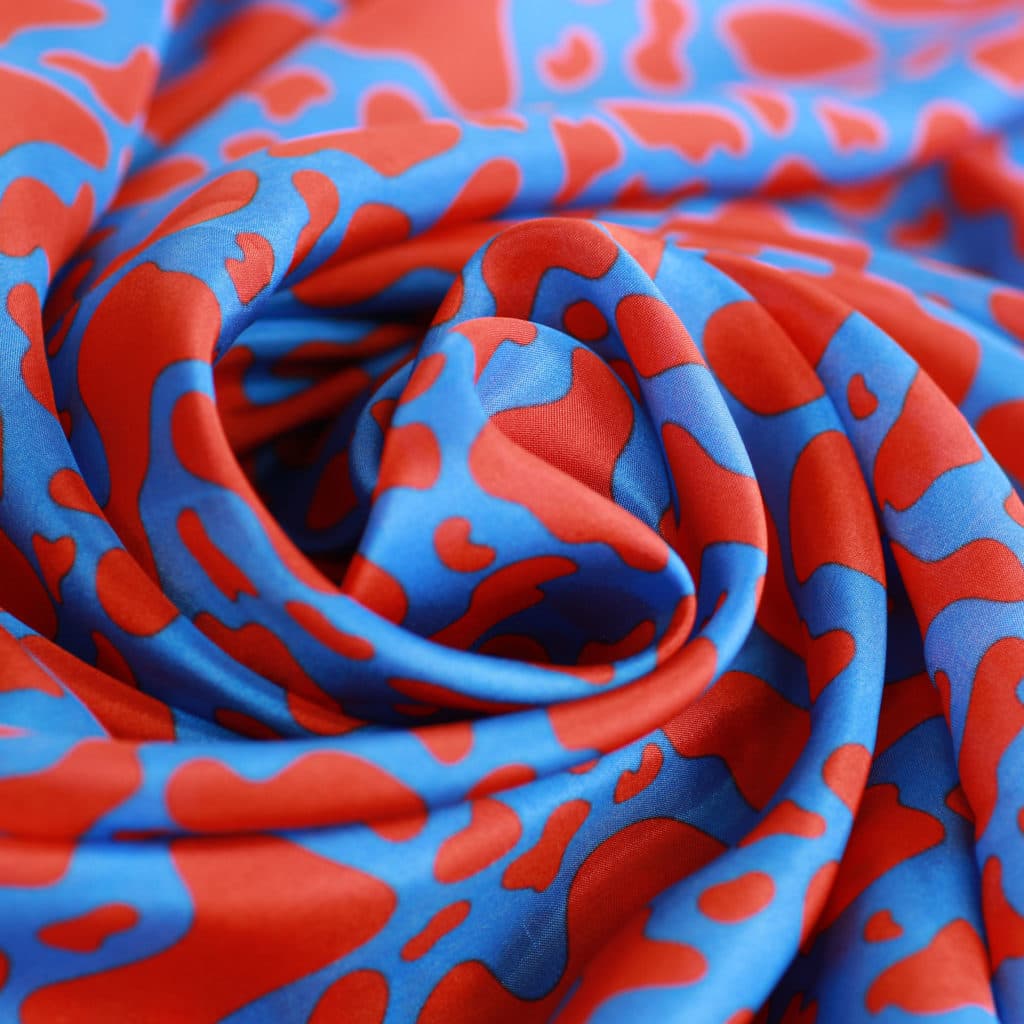How you wash, dry and care for your silk will ensure its longevity and maintain its shiny, soft qualities for many years to come.
Silk has long been one of the most sought after fabrics in the world, with many different uses from silk scarves and clothing to home decor, with the fabric even proving to be a good addition to your beauty sleep routine.
While silk holds the status of being one of the strongest natural fibers in the world, the fabric itself is incredibly delicate and requires special attention when it comes to cleaning, drying and storing to ensure it stays in pristine condition.

Does silk need to be dry cleaned?
For many years, it was thought that dry cleaning was the only way to properly care for silk – but silk can actually be washed at home. While the care labels on many silk products may instruct that the item be dry cleaned, this is simply down to the manufacturers preference.
Care labels are only required to state one method of washing, and this is to the discretion of the manufacturer. It makes sense that dry cleaning will typically be their preferred choice, as this limits the chance of mishandling and thus, complaints from customers who have ruined their perfectly good silk products. However, it’s important to note that should the label clearly state “dry clean only” then this should be followed as strict instructions.
Can silk be machine washed?
While it is entirely possible to machine wash silk, it isn’t recommended. Being such a delicate fabric, silk doesn’t tend to get along well with the constant turning motion of the machine drum. Silk should be handled with care, and throwing it in a washing machine can often be a little too rough.
Not only that, but it isn’t advisable to wash silk using the same cleaning products that you would on your cotton t-shirts. Silk should ideally be washed using special silk detergent, and washing machines can often hold onto residue from regular detergents or bleach from previous washes – all which risk damaging your silk.
If you are desperate to wash your silk articles in this way, ensure that your washing machine has a programme for washing delicate articles at a temperature of 30° – 40°. Although, before going ahead and throwing your delicate silks in the wash – ensure that you follow the above precautions beforehand, and wash the garment on its own.
1. How to wash silk
Before submerging your expensive silk into the washing bowl, there are a few careful considerations and preparations that need to take place.
1. Is your silk colour fast?
Silk takes to dying incredibly well, but while it can uphold the most stunning bold and vibrant patterns, printed silks can be prone to bleeding. To ensure that the print of your silk doesn’t spoil through the washing process, it’s important to test its colour fastness.
The easiest way to do this is to wet a small area of the fabric with a little bit of water (ideally somewhere which won’t be immediately obvious if it goes wrong!) and take a cotton bud to the wet area. By gently pressing, not rubbing, you will see whether or not the cotton bud picked up any colour residues. If it did, your silk will need to go to the dry cleaners. However, if your test returned a clean swab, you can go ahead and hand wash your silk as per the below instructions.

2. Pre-treat any stains
Stained your silk? You’ll want to see to that before getting involved in the washing process. Ideally, stains should be treated as soon as possible to give it the best chance of being removed.
The best way to remove stains from silk is with a 50/50 mixture of silk detergent and water. Soak a cotton bud with the solution, and gently rub it onto the stained area – don’t rub too vigorously, always handle silk with care! Repeat the same process on the backside of the stained silk, and you’ve completed the pre-treatment.
Note: Always seek out detergents specifically created for silk or delicate garments, and steer clear from all-purpose stain removers to avoid damaging your silk.
3. Hand washing silk
Once your silk has been prepared and you’re 100% certain it can be hand washed without bleeding, you may proceed. Ensure you have a thoroughly cleaned sink/bowl and fill it with cool water. Not too cold, not lukewarm but a nice middle ground between the two.
Add your silk detergent to the water by following the manufacturers instructions and sumberge your silk. Don’t go anywhere, as you won’t be soaking your silk for too long and it requires your attention at all times.
Constant movement is the key here, so you want to be gently swirling your garment in the water, ensuring that all areas are being washed, for approximately 4-5 minutes for small lengths of silk. Otherwise, larger garments may be soaked for up to 30 minutes.

4. Rinsing silk
Promptly take your garment out of the bowl once washed for the advised period of time, being careful not to squeeze the water out. Instead, drain the soapy water from the bowl and refill it with some more cool, clean water.
To remove any detergent residue, gently swirl your garment around in the water again for approximately one minute, ensuring that no soap is left behind. Repeat the process if necessary.
2. How to dry silk
You’re not going to need your tumble dryer for this one, as this method of drying silk is strongly advised against. Instead, silk should be air dried for the best results.
Firstly, you want to absorb any excess moisture by laying it out flat on top of a clean towel. Roll the towel up with the silk inside, and gently press down. Repeat the process with another clean towel until the silk is no longer soaking.
Once removed from the towel, lay the silk garment out flat on a drying rack without using any clothes pegs. The silk should be dried in the shade, as direct sunlight can cause its colours to fade.
Silk tends to dry quite quickly, and you should fine that your garment is dry within around 30-60 minutes.

3. How to iron silk
If your silk has air dried flat, you shouldn’t see many wrinkles or creases in it. However, a quick run over with the iron can help it to look brand new! Yes, steaming is usually the safest way to go about removing creases, but silk can be ironed just as well.
To avoid staining or damaging your silk, ensure that your iron and ironing board are clean and free from any water or liquids. Be sure to iron on the backside of the fabric, and stick to a low heat. If your iron has a special silk setting, use that or set the temperature to around 148°C (300°F). Whatever you do, steer clear of the steam setting – we want to avoid any water droplets at all costs!
Top tip: Use a pressing cloth for ironing double-sided silk to avoid applying heat directly to the pattern on either side.

4. How to store silk
Now that you know how to properly wash and dry your silk, it’s important that you know how to store it correctly to maintain its quality in between wears and washes.
Silk generally should be stored in a cool, dark and dry place with adequate air circulation. Being a natural fibre, silk needs to be able to breathe so avoid packing your silk garments away in tightly sealed plastic bags. For best results, hang inside breathable cotton bags to avoid unwanted creases and wrinkles so that it’ll maintain its shape and be good to go for your next wear.
Finally, silk should always be clean before storing away. You don’t want to hang up any silk garments that may be stained, dirty or carrying natural oils as this can degrade the fabric over time and lead to damage.
Whether it’s a beautiful silk dress for a special occasion or luxurious silk bedding, investing in true silk products will last you a lifetime should you care for them properly.
Please note that this is a general guide to washing silk, and certain qualities may vary. Always check the care label before proceeding with washing silk at home.
Biddle Sawyer Silks are a leading UK silk wholesaler and silk printing specialist, based in Manchester and serving nationwide. Our fine quality silks include georgette, chiffon, crepe de chine and many more. We can match your chosen silk to any colour sample using our bespoke colour match service.
Click here to find out more about our services or get in touch with us to make an enquiry.





